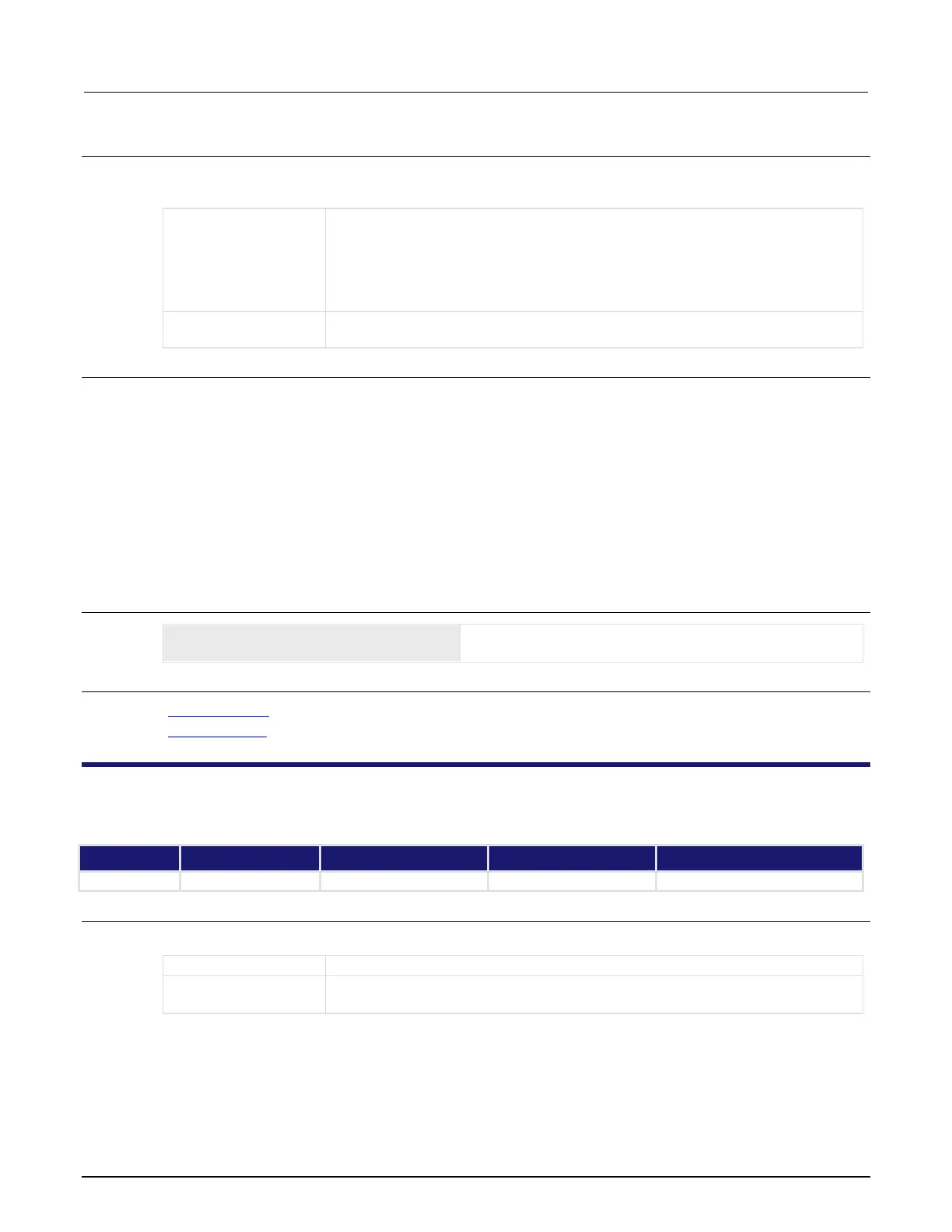Section 11: TSP command reference Model 2601B-PULSE System SourceMeter Instrument Reference Manual
11-18 2601B-PULSE-901-01A April 2020
Usage
state = bufferVar.appendmode
bufferVar.appendmode = state
The reading buffer append mode; set to one of the following:
▪ 0: Append mode off; new measurement data overwrites the previous
buffer content
▪ 1: Append mode on; appends new measurement data to the present
buffer content
The reading buffer; can be a dynamically allocated user-defined buffer or a dedicated
reading buffer
Details
Assigning a value to this attribute enables or disables the buffer append mode. This value can only be
changed with an empty buffer. Use bufferVar.clear() to empty the buffer.
For dedicated reading buffers, all buffer attributes are saved to nonvolatile memory only when the
reading buffer is saved to nonvolatile memory.
If the append mode is set to 0, any stored readings in the buffer are cleared before new ones are
stored. If append mode is set to 1, any stored readings remain in the buffer and new readings are
added to the buffer after the stored readings.
With append mode on, the first new measurement is stored at rb[n+1], where n is the number of
readings stored in buffer rb.
Example
Append new readings to contents of the reading buffer named
buffer1.
Also see
bufferVar.clear() (on page 11-21)
Reading buffers (on page 5-1)
bufferVar.basetimestamp
This attribute contains the timestamp that indicates when the first reading was stored in the buffer.
Usage
basetime = bufferVar.basetimestamp
The timestamp of the first stored reading
The reading buffer; can be a dynamically allocated buffer (user-defined), or a
dedicated reading buffer (such as smua.nvbuffer1)

